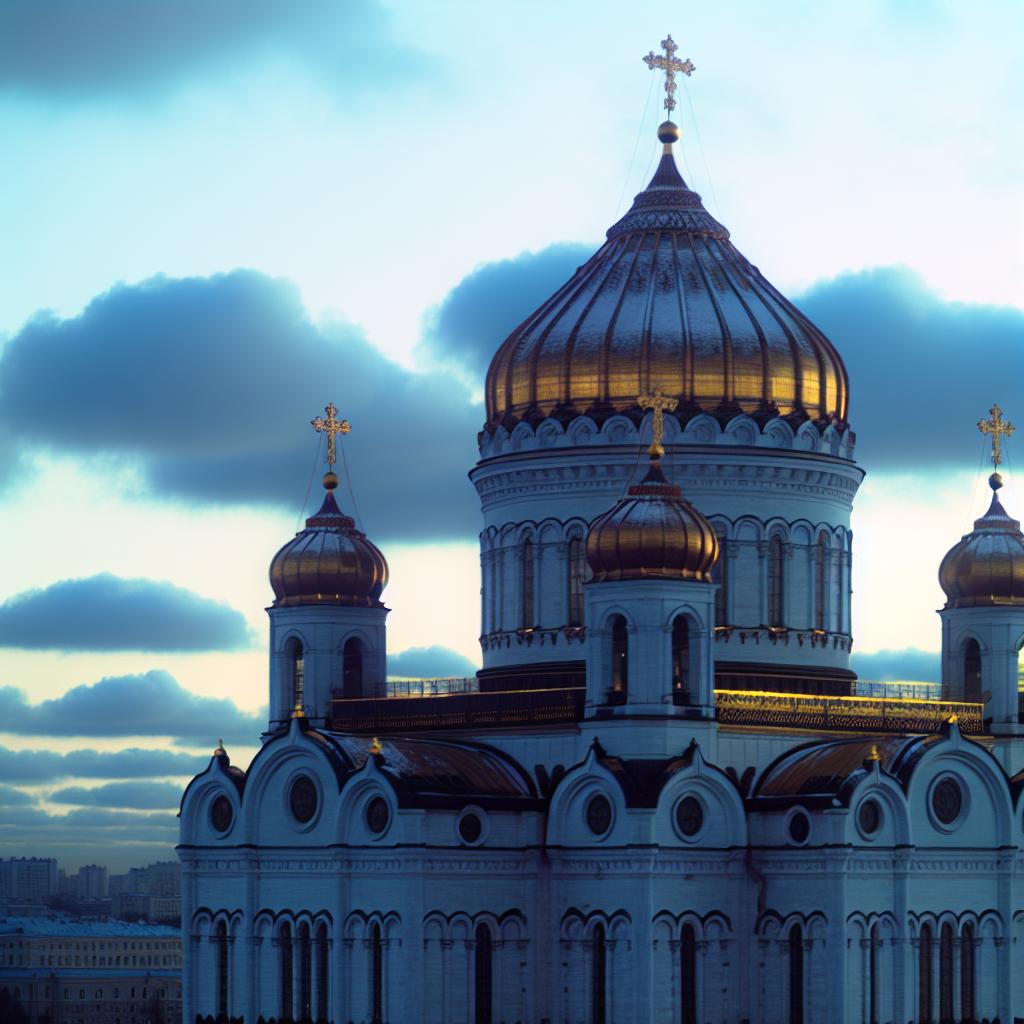Historical Background
The Cathedral of Christ the Savior, located in Moscow, Russia, stands as a monumental testament to the rich religious and architectural heritage of the country. Its initial construction was commissioned in the 19th century as a monumental gesture to commemorate the significant victory over Napoleon’s invading forces in 1812. This victory was celebrated across the nation and marked a pivotal turning point in Russian history. The original construction of the cathedral was completed in 1883, after several decades of intensive planning and building efforts, showcasing the architectural ambition and resource dedication of its time.
The choice to erect such a grand structure was not only a way to express religious devotion but also a means to symbolize national pride and cultural identity, blending both through exquisite architectural craftsmanship.
Demolition and Reconstruction
The fate of the cathedral took a drastic and dramatic turn during the period of the Soviet era, which fundamentally altered its existence. Under the regime of Joseph Stalin, the original building, a symbol of religious faith and national identity, was demolished in 1931. This demolition was part of a broader campaign against religious structures, as the Soviet regime sought to endorse atheism and diminish the church’s influence across the Union. The space was cleared to accommodate the proposed Palace of the Soviets, an ambitious architectural project that was meant to exemplify Soviet power and modernity. However, this grand plan was never realized due to various complications, including funding issues and foundational challenges. Consequently, the site witnessed the construction of the Moskva Pool, which, at the time, became the world’s largest open-air swimming pool, representing a shift in societal values and priorities under communist rule.
With the collapse of the Soviet Union in the late 20th century, a significant cultural and spiritual shift occurred within Russia. Efforts to reconstruct and resurrect the cathedral gained momentum, reflecting a revival of religious and national consciousness. The project was spearheaded by the Russian Orthodox Church along with the support of the Russian government, initiating a reconstruction phase in 1995. This ambitious project aimed not only to replicate the cathedral’s original architectural design but also to modernize it by incorporating contemporary building materials and construction techniques. Following years of dedicated reconstruction work, the newly formed cathedral was consecrated in 2000, marking a significant milestone in Russia’s post-Soviet era.
Architecture and Design
The architectural design of the Cathedral of Christ the Savior is firmly rooted in traditional Russian architectural styles, showcasing a synthesis of historical accuracy and modern construction. The structure features a prominent large central dome, symbolizing the celestial, which is harmoniously accompanied by four smaller domes. This architectural configuration is adorned with opulent golden decorations, which capture the essence of ornate Russian design and highlight the grandeur of the structure.
Inside, the cathedral’s interior is lavishly decorated. It features intricate frescoes and mosaics that narrate stories and depict religious iconography, and ornate fittings that contribute to the overall elegance and spiritual ambiance of the space. Although the current cathedral is a recreation of its predecessor, efforts were made to preserve historical continuity. This was achieved through the integration of salvaged artifacts and architectural motifs that echo the essence of the original structure, ensuring that the reconstructed cathedral remained a bridge between the past and present.
Cultural Significance
The Cathedral of Christ the Savior holds tremendous cultural and religious significance within Russia and beyond. It serves as the principal cathedral of the Russian Orthodox Church, playing a critical role in major religious ceremonies and celebrations. The reconstruction of the cathedral is widely perceived as a symbol of Russia’s spiritual renewal, marking a new era following the end of Soviet atheism. This renaissance reflects a broader cultural effort to embrace and revive traditional spiritual and national values that were once suppressed under Soviet ideology.
Beyond its religious affiliations, the cathedral is a cultural beacon that represents resilience, rebirth, and the enduring power of faith. It has become a focal point for both national pride and historical reflection, making it an essential part of Russia’s cultural and religious tapestry.
Visiting Information
The Cathedral of Christ the Savior is an accessible and welcoming site for both worshippers and tourists alike. Visitors can explore several key areas, including the main hall, which is the center of spiritual activity; the lower church, which hosts additional religious functions and gatherings; and the exhibition area that provides historical context and detailed insight into the cathedral’s storied past.
One of the highlights for many visitors is the observation deck. This vantage point offers breathtaking panoramic views of Moscow, providing a unique perspective of the city’s sprawling geography and architectural landmarks. The observation deck is a popular attraction for both foreign tourists and locals, offering an opportunity to appreciate the beauty of Moscow from a truly unique height.
For those interested in visiting, it is recommended to check official tourism websites or contact the cathedral directly for additional details, including entry times and ticket prices. These resources can provide essential information to ensure a fulfilling and insightful visit to this remarkable landmark that harmoniously blends Russia’s past with its present.

